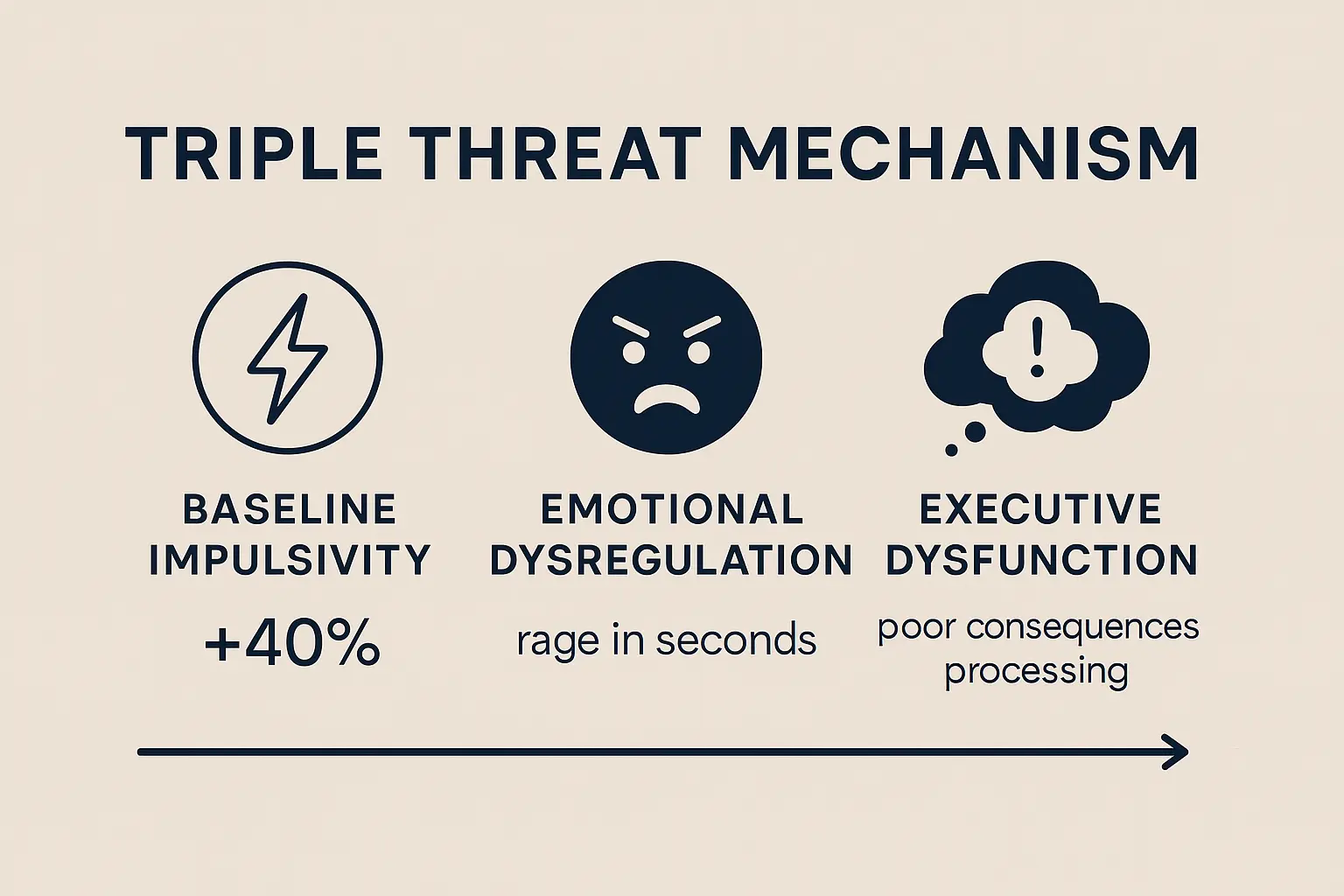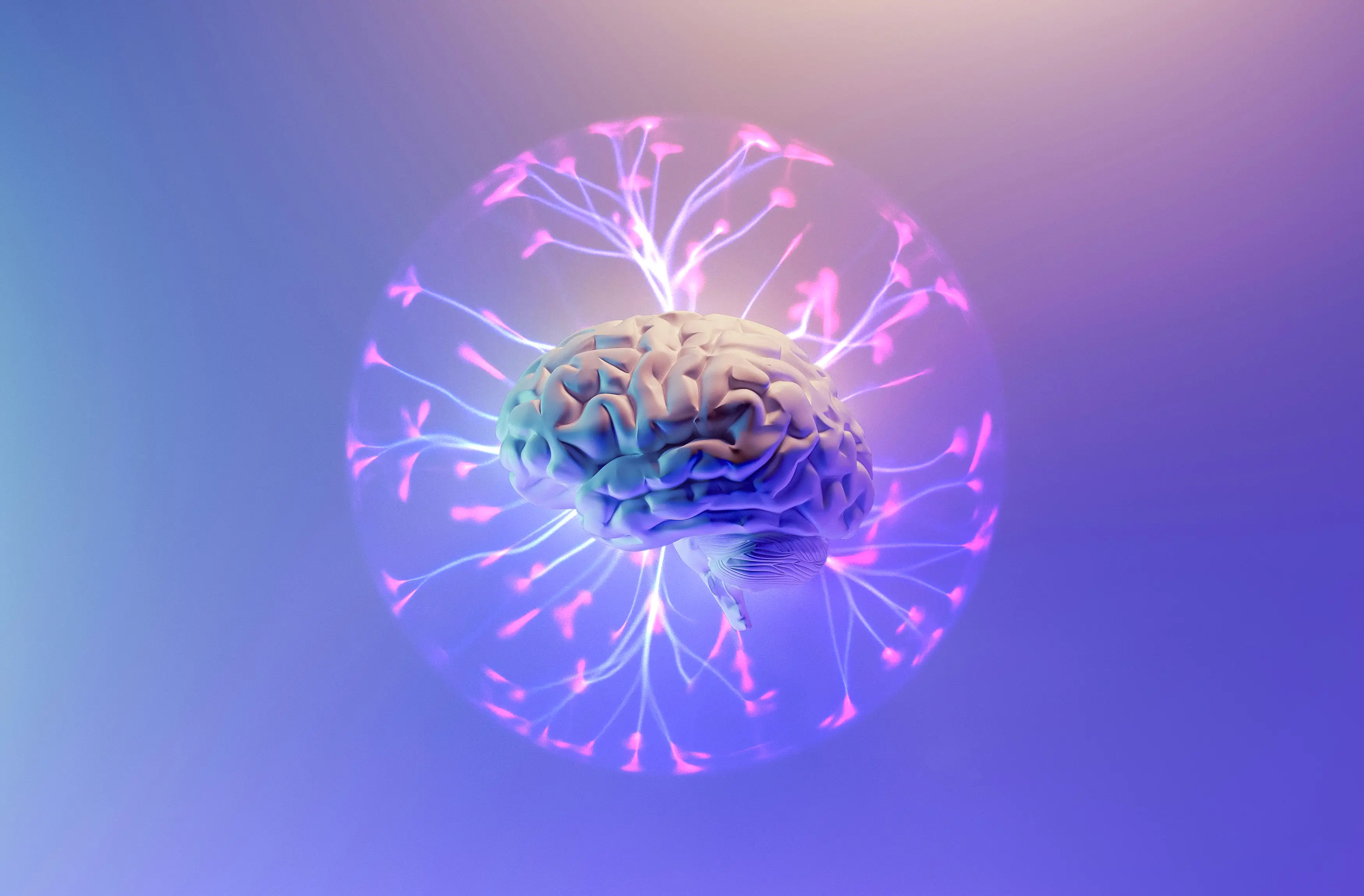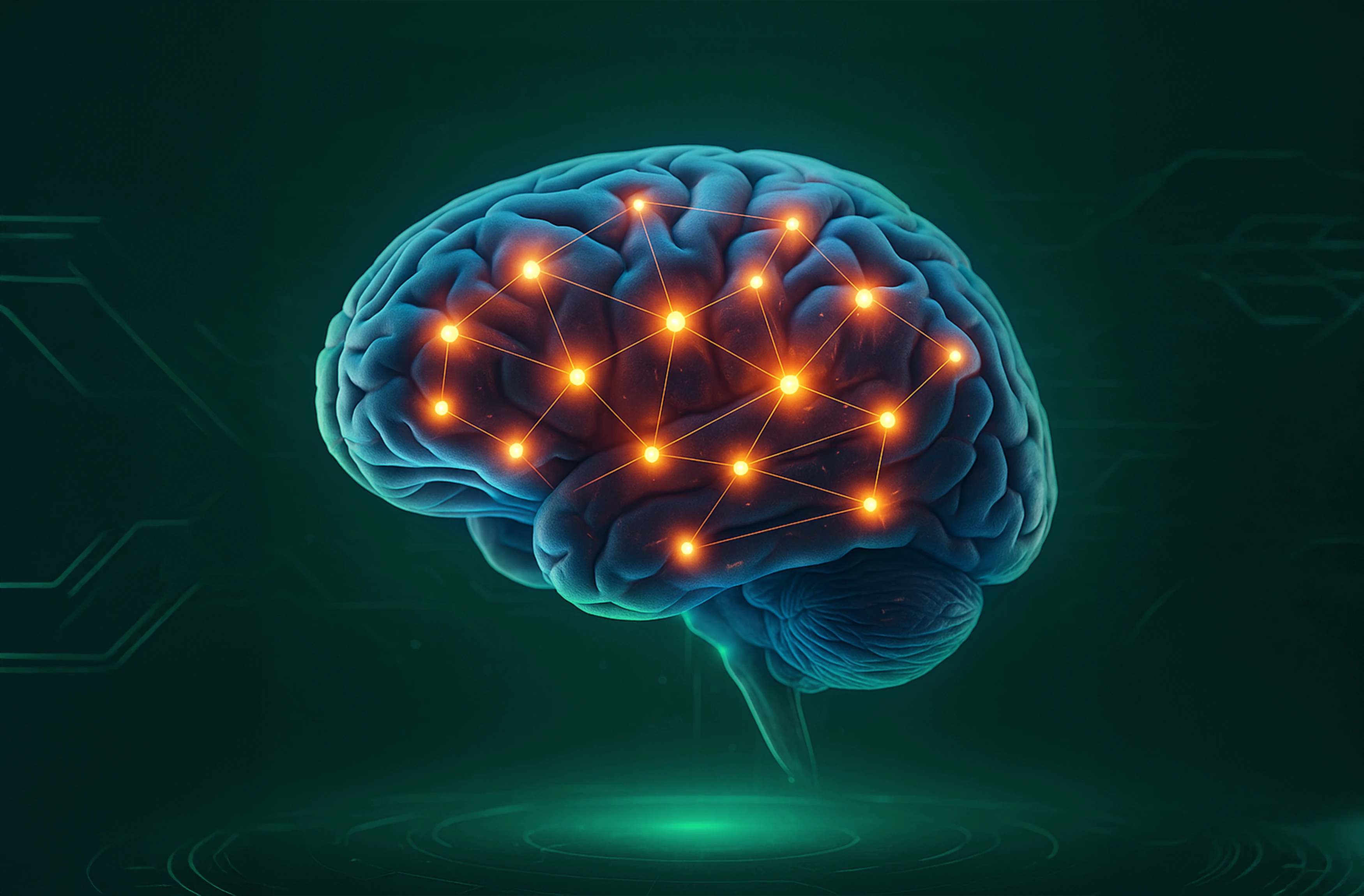When Impulsivity Meets the Law
Having ADHD increases your risk of criminal justice involvement by 400%. Add alcohol, poverty, or trauma, and those numbers skyrocket. Here's what forensic psychiatry reveals about ADHD's collision with the law.
Walk into any prison and you'll find an ADHD epidemic: 45% of inmates meet ADHD criteria versus 5% in the general population. This isn't coincidence — it's the predictable result when an impulsive, emotionally dysregulated brain meets a world of rules, substances, and split-second decisions.
The Forensic Reality: ADHD's Legal Vulnerabilities
The Shocking Statistics
A comprehensive forensic review analyzing 15,000 offenders revealed the ADHD crime landscape:
- 38% of ADHD individuals with alcohol problems** commit violent acts
- 12% of ADHD individuals without alcohol** engage in violence
- 3% of general population** for comparison
But violence is just one piece. ADHD appears across all crime categories:
- Property crimes: 5.2x higher (impulsivity + poor planning)
- Drug offenses: 4.8x increased risk
- Traffic violations: 7.3x more likely
- Domestic violence: 3.9x higher rates
The Triple Threat Mechanism
Dr. Susan Young's forensic research at Imperial College identified why ADHD brains collide with law enforcement:
- Baseline impulsivity - 40% higher than neurotypical
- Emotional dysregulation - 0-100 rage in seconds
- Executive dysfunction - can't process consequences in real-time
Add any catalyst — alcohol, rejection, frustration — and you have a forensic psychiatrist's perfect storm.

The Pathways to Prison
Pathway 1: The School-to-Prison Pipeline
It starts early. Children with ADHD face:
- 11x higher suspension rates
- 7x more expulsions
- First police contact: Average age 14 (vs 17 for neurotypical)
Untreated ADHD in school becomes:
- Oppositional behavior → Defiance
- Academic failure → Dropout (32% rate)
- Social rejection → Antisocial peer groups
- Self-medication → Substance abuse
By 18, 35% of untreated ADHD youth have been arrested.
Pathway 2: The Substance Spiral
Forensic data shows 78% of ADHD inmates report substance involvement in their crimes:
The progression:
- Self-medication begins (average age 15)
- Addiction develops 3x faster than neurotypical
- Crime to fund addiction
- Impaired judgment leads to violence
- Arrest becomes inevitable
Alcohol's special role:
When ADHD individuals drink:
- Violence risk increases 12.7x
- Blackout threshold 40% lower
- Disinhibition meets poor judgment
- Tomorrow's consequences don't compute
Pathway 3: The Rage Incident
ADHD emotional dysregulation + trigger = forensic involvement:
Common scenarios:
- Road rage escalation (6.7x more likely)
- Bar fights (11x increased risk)
- Domestic disputes turning violent
- Workplace altercations
One study found 67% of ADHD violent offenses were "heat of the moment" versus 23% for neurotypical offenders.
The Gender Divide: Different Crimes, Same Brain
Men with ADHD:
- Physical violence: 8.3x higher
- Property destruction: 6.2x more likely
- Aggressive driving: 9x increased risk
- Weapon involvement: 4.1x higher
Women with ADHD:
- Shoplifting: 5.7x higher (impulsivity + emotional regulation)
- Fraud/forgery: 4.2x increased (desperation + poor planning)
- Prostitution: 6.8x higher risk (trauma + addiction + survival)
- Child neglect charges: 3.9x more likely (overwhelm + executive dysfunction)
Women's crimes often stem from survival and overwhelm; men's from aggression and impulsivity.
Inside the System: Why ADHD Inmates Fail
Once incarcerated, ADHD creates unique challenges:
Prison Inadaptability:
- Rule compliance: Nearly impossible with executive dysfunction
- Routine requirements: Torture for ADHD brains
- Sensory overload: Constant noise, lights, chaos
- Medication access: Often denied or inconsistent
- Solitary confinement: 3.2x more likely (due to infractions)
The Recidivism Trap
ADHD inmates show 67% recidivism versus 31% for others because:
- Parole requirements overwhelm executive function
- Appointment keeping: Nearly impossible
- Paperwork compliance: Executive function nightmare
- Impulse control: One bad day = back inside
- Support systems: Usually destroyed
The Trauma Multiplier
Forensic psychiatrists note the ADHD-trauma cycle:
- 70% of ADHD inmates report childhood trauma
- Trauma worsens ADHD symptoms by 45%
- ADHD increases trauma exposure (risk-taking, vulnerability)
- Combined effect: 15x increased incarceration risk
The Protective Factors That Actually Work
Early Intervention
Swedish longitudinal data (n=25,000) shows:
- ADHD medication before age 15: 42% reduced crime risk
- Continuous treatment: 52% lower criminal involvement
- Therapy + medication: 61% reduction
The Complete Protection Protocol:
- Early diagnosis and treatment (before self-medication begins)
- Trauma-informed therapy (addressing the multiplier)
- Substance abuse prevention (education about ADHD vulnerability)
- School accommodations (preventing the pipeline)
- Family education (reducing domestic triggers)
- Vocational support (legal income sources)
The Forensic Interview: What ADHD Looks Like to Law Enforcement
Police often misinterpret ADHD as:
- Fidgeting = Hiding something
- Rambling speech = Lying
- Inability to sit still = Drug use
- Emotional intensity = Aggression
- Poor eye contact = Deception
This leads to escalation, harsher charges, and worse outcomes.
The Solution: Forensic ADHD Programs
Successful interventions require:
- ADHD screening at arrest (45% undiagnosed)
- Medication in custody (reduces incidents 61%)
- ADHD-adapted probation (shorter meetings, written reminders)
- Vocational training (channeling hyperactivity)
- Peer mentorship (successful ADHD ex-offenders)
Programs implementing these show 43% reduced recidivism.
The Bottom Line: A Predictable Tragedy
The forensic data is clear: ADHD + lack of treatment + environmental stressors = criminal justice involvement. It's not inevitable, but it's highly probable.
The tragedy isn't that ADHD brains are "criminal" they're not. It's that impulsivity, emotional dysregulation, and executive dysfunction collide with a world that punishes these traits harshly. Add alcohol, poverty, or trauma, and incarceration becomes almost mathematical.
But here's the hope: Every intervention point diagnosis, medication, therapy, support dramatically reduces risk. The prison pipeline isn't inevitable; it's preventable.
The question isn't whether ADHD increases legal risk (it does, dramatically). The question is whether society will address it as a public health issue or continue criminalizing a neurodevelopmental condition.
For individuals with ADHD: Your brain's wiring puts you at risk. Know it. Plan for it. Get treatment. Avoid alcohol. Build support systems. Your freedom literally depends on it.
Book your first consultation with BeneFida today — and let’s find what works for you.











.jpg)

